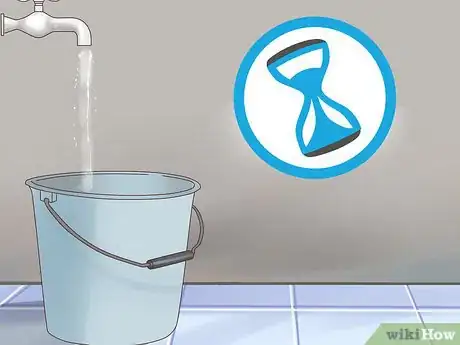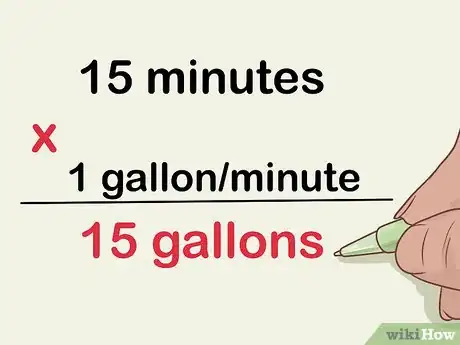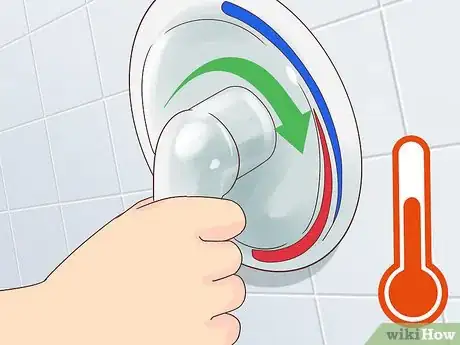wikiHow is a “wiki,” similar to Wikipedia, which means that many of our articles are co-written by multiple authors. To create this article, 16 people, some anonymous, worked to edit and improve it over time.
This article has been viewed 123,196 times.
Learn more...
Do you want to take a shower that wastes less water and takes very little time? A normal shower can waste up to 60 gallons of water where a navy shower can use as little as 3 gallons.[1] Developed by the Navy to preserve the supply of fresh water on ships, this technique can save you money on your water bill and have a positive impact on the environment.
Steps
-
1Measure the flow rate of your shower. You can do this simply by taking a one gallon bucket and gauging the length of time it takes for the bucket to fill. If your one gallon bucket fills in one minute, and you take a 15-minute shower, you will use an estimated 15 gallons of water (15 minutes x 1 gallon/minute = 15 gallons)
- The goal of a navy shower is to reduce the amount of water you use to about 3 gallons. To reach this goal you must first understand your average water consumption.
-
2Calculate your average water usage per shower. Using the information you have gathered about the flow rate of your shower, determine the amount of water on average you use. You can do this by multiplying the amount of water used in a minute by the total minutes on average you shower.
- The typical flow rate of a shower is approximately four gallons per minute. If you have difficulty measuring your flow rate for some reason, use this number to predict the total gallons used.
Advertisement -
3Improve the flow rate of your shower. You can install a "flow controller" from a local hardware store to make your navy shower even more efficient. If conservation is your goal, this option is a worthy addition.
-
1Turn on the water and let it warm up. If you are truly doing this for the environment or for utility bills, make use of the cool water by collecting it in a bucket to water your plants. You can also use it to shave.
-
2Wet your body and hair. Step into the shower and quickly get yourself fully wet before turning the shower off. Use your hands or a washcloth to fully douse your body before turning off the water.
-
3Shampoo your hair and wash yourself with soap. Perform this while your shower is off by using a loofah, washcloth, or your hands.[2] It's a good idea for you to scrub yourself firmly. You will not have the benefit of running water and its additional cleansing effect.
- Perform your washing quickly, especially if you have an inefficient water heater. Waiting too long can create unpleasant variances in the temperature.
-
4Rinse out your shampoo and soap. Now that you've finished washing yourself thoroughly, rinse yourself off with a short blast from the shower.
-
5Use conditioner, if applicable. Using a short blast to ensure your hair is clear of shampoo and sufficiently wet, turn the shower off while lathering your hair. When you're finished applying your conditioner, turn the water on and quickly rinse off.
References
About This Article
Taking a navy shower is a great way to save you time and water. First, step into your shower when it gets warm and wet your hair and body. Then, shut it off. Shampoo your hair and wash your body, and try to do it quickly so the water doesn’t go cold again. Turn the water back on and rinse your hair and body. If you need to condition your hair, shut the water off again, condition your hair, turn the water back on, then rinse it out. To save even more water, use a bucket to collect the cold water as your shower first warms up. Then, use the water to shave or water your plants. For more tips, including how to reduce the flow of your shower to save water, read on!


































































